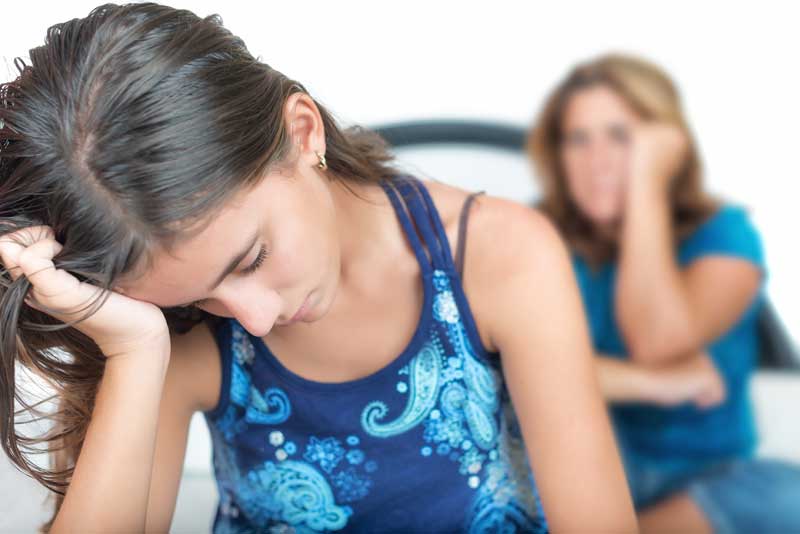Teens and Depression

About 18% to 28% of teens have mild to moderate depression, as assessed by surveys of junior high and high school students. Teens are expert at hiding their true feelings in order to look like they fit in with their friends. Adolescents with depression are more likely than adults to keep up with their day to day activities and put on a happy face while they are depressed in order to disguise their true feelings6. When an adolescent is depressed, common feelings and thoughts include having a harsh conscience, painful feelings of guilt, loss of self esteem, negative self thoughts, incompetence, despondency, and being unlovable. When boys become depressed, they tend to exhibit rejecting behavior, like cursing at the world. When girls become depressed, they tend to exhibit self punishing behavior like bingeing or starving themselves7.
Teens show five patterns of psychological disturbances if they are troubled. Those are: delinquency, suicidal behavior, depression, eating disorders, and schizophrenia. When a teen’s home life is a mess, coping with all the family dysfunctions can be overwhelming. On a lighter note, adolescent depression caused by a life situation, like death in the family, or breaking up with a girlfriend or boyfriend, is usually resolved without professional help.
Teens whose parents suffer from depression and are a bit dysfunctional themselves have the most trouble adjusting to life as an adult, even more than teens whose parents have schizophrenia8. No matter what the family life is like, though, some teens become so despondent that professional help or even hospitalization is necessary. Please, never ignore a teen who threatens to commit suicide, whether it was during a serious moment or with a seemingly flippant remark. Because of their adeptness at hiding true feelings, a quick joking side comment that they are going to “end it all” may not be a joke, and may be a big clue that they need someone to confide in urgently.
People of different professions and backgrounds tend to chalk depression up to different reasons. He’s depressed? Oh, it’s genetics. It’s his lack of interpersonal skills. It’s because he doesn’t know God. It’s because he’s lost his faith. It’s a disease. It’s his crazy lifestyle. He’s weak and selfish, he wants to get all the attention. It’s a chemical imbalance in the brain. How easy for the depressed person to become lost due to all the opinions about the problem9! The trusted adult’s role becomes very important at this stage, and the teen should be coaxed into opening up and not allowed to wallow in long periods of uninterrupted gloom10.
An adult’s mental state is impacted by childhood trauma in a profound way. At least half of all children exposed to traumatic events like incest, rape, drive-by shootings, random violence, constant domestic violence, etc. may be expected to develop significant long-term mental symptoms, depending on the severity, frequency, and pattern of the traumatic events11.
Between the prevalence of dysfunctional family dynamics, traumatic childhood events, and poor eating habits, it’s no wonder that 40 million people are taking antidepressant medications12.
6. Balk, David E. Adolescent Development: Early Through Late Adolescence (Brooks/Cole Publishing Company, 1995) pg 535.
7. Philadelphia Child Guidance Center with Maguire, Jack. Your Child’s Emotional Health: Adolescence (Macmillan Publishing Company, 1993) pg. 334.
8. Balk, David E. Adolescent Development: Early Through Late Adolescence (Brooks/Cole Publishing Company, 1995) pg. 539.
9. Psychology Today. “What Causes Depression?” Jul/Aug 2003. http://www.psychologytoday.com/articles/pto-20030721-000002.html
10. Philadelphia Child Guidance Center with Maguire, Jack. Your Child’s Emotional Health: Adolescence (Macmillan Publishing Company, 1993) pg 334.
11. Perry, Bruce D. “Childhood Trauma, the Neurobiology of Adaptation and Use-dependent Development of the Brain: How States become Traits” http://www.childtrauma.org/ctamaterials/states_traits.asp
12. Ross, Julia. The Mood Cure (New York: Penguin Books, 2002) pg. 213.